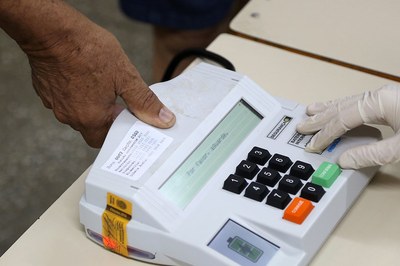Biometrics
In 2000, though technology was successfully employed in the electoral process through electronic voting machines, the voter identification procedure still depended entirely on human intervention. The poll workers received the documents of the person intending to vote, checked their data, typed the registration number in the electronic voting machine, and, if the voter card was registered in that polling station, released themachine for voting.

Since then, thetechnology has been widely implemented in the country, and in the 2024 Municipal Elections, more than 132 million voters are biometricallyidentified, corresponding to 82.69% of the electorate. The expectation is that almost 100% of the electorate will be able to vote with biometric identification in the 2026 elections.
Biometric identification makes the electoral process even more secure by preventing one person from voting for someone else, making it possible to detect voters registered more than once in the Electoral Register. The adoption of biometrics is another initiative by the Electoral Justice to reduce human intervention in the voting process. In addition, biometrics is one of the elements that make up the database of the National Civil Identification, a program created to identify Brazilians in their interactions with the State, thereby providing security and ease in the use of various identification services.
The collection of biometrics is a mandatory and free electoral service, carried out only in person at the electoral registry offices.
For further information go to https://www.justicaeleitoral.jus.br/biometria/
